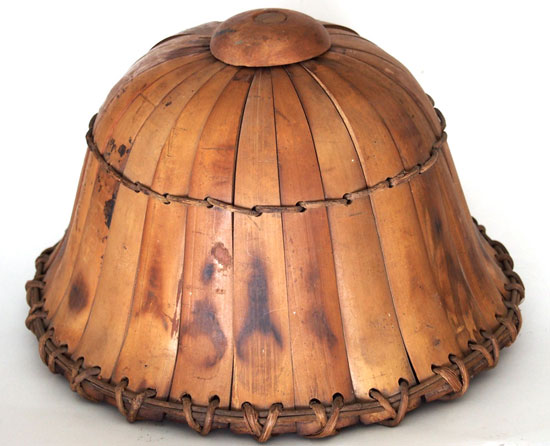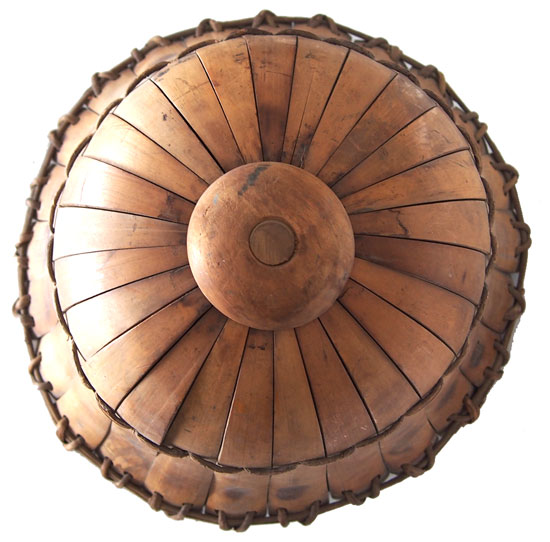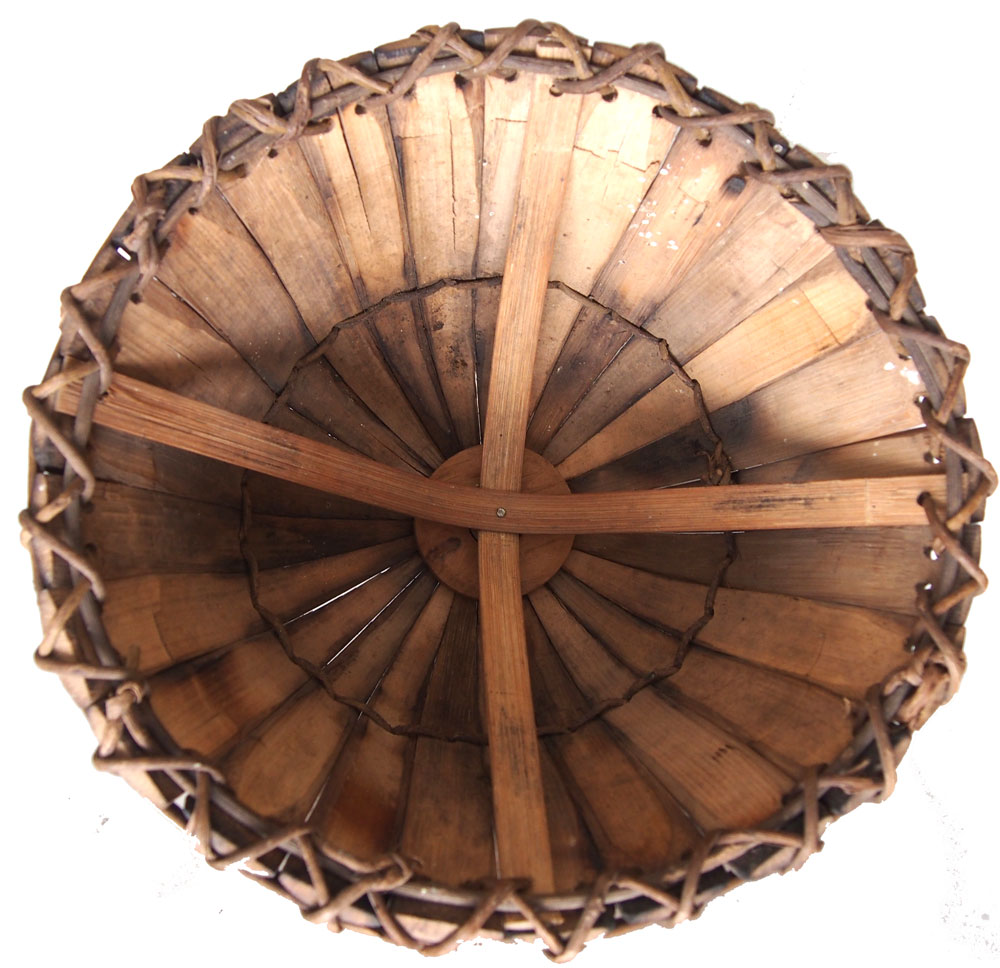
As has been noted the Japanese sun helmet went through several stages of evolution before and notably during World War II. One factor was the ability of manufacturers to acquire the supplies and materials. Helmets that were made of straw and even helmets that were essentially cloth and felt with little in the way of an frame apart from Sanada tape – but one unique and disputed variation is the bamboo helmet.
Some sources have maintained these were actually civil defense or “last ditch” helmets meant to be used by the civilian population to defend the home islands. Other sources have suggested these were field made sun helmets in the shape of the Type 90 style helmets. Still others have suggested there were farmer helmets – and in this case there is even the debate over whether were actually used by soldiers.
While we take no formal opinion except to say that the farmer theory seems dubious as the helmets lack the appearance and shape of the traditional conical hats that were used in the fields of Japan and other parts of Asia. In this author’s opinion it is actually likely that the two theories of “field made sun helmet” and “last ditch” helmet may overlap.

The overhead view of the bamboo helmet does show that 25 individual pieces of bamboo had to be cut, shaped and bent to make this helmet. These individual pieces were tied together and a cap on top helped hold the helmet together – the result is a helmet that does resemble the early Type 90 style Japanese sun helmets. It should be added these helmets would provide the same protection from the sun as the other late war sun helmets but would offer no ballistic protection.
I would only suggest that it is possible that these were made in tropical regions where bamboo was plentiful and perhaps this led to this pattern’s consideration – if not actual use – as a “last ditch” helmet.
Whatever the case it is true that these helmets are generally uncommon and when encountered tend to be in good condition. This actually would make sense as the material is robust. At best it was likely a garrison type of headgear that didn’t see a lot of use in combat. It is also true that examples were brought back to America by returning soldiers – and that alone suggests that these were available beyond the home islands.

The interior of the helmet shows a rather simplistic liner. This helmet would likely need to be worn over a cap and this suggests officers or NCOs who were issued caps could easily have worn this. This view also shows that significant effort may have been required to produce these helmets. Were these meant as a sun helmet or last ditch combat helmet?
No doubt the debate as whether these were sun helmets, last ditch helmets or just civilian helmets that resembled the sun helmet, will likely continue.
Peter Suciu
March 2017
